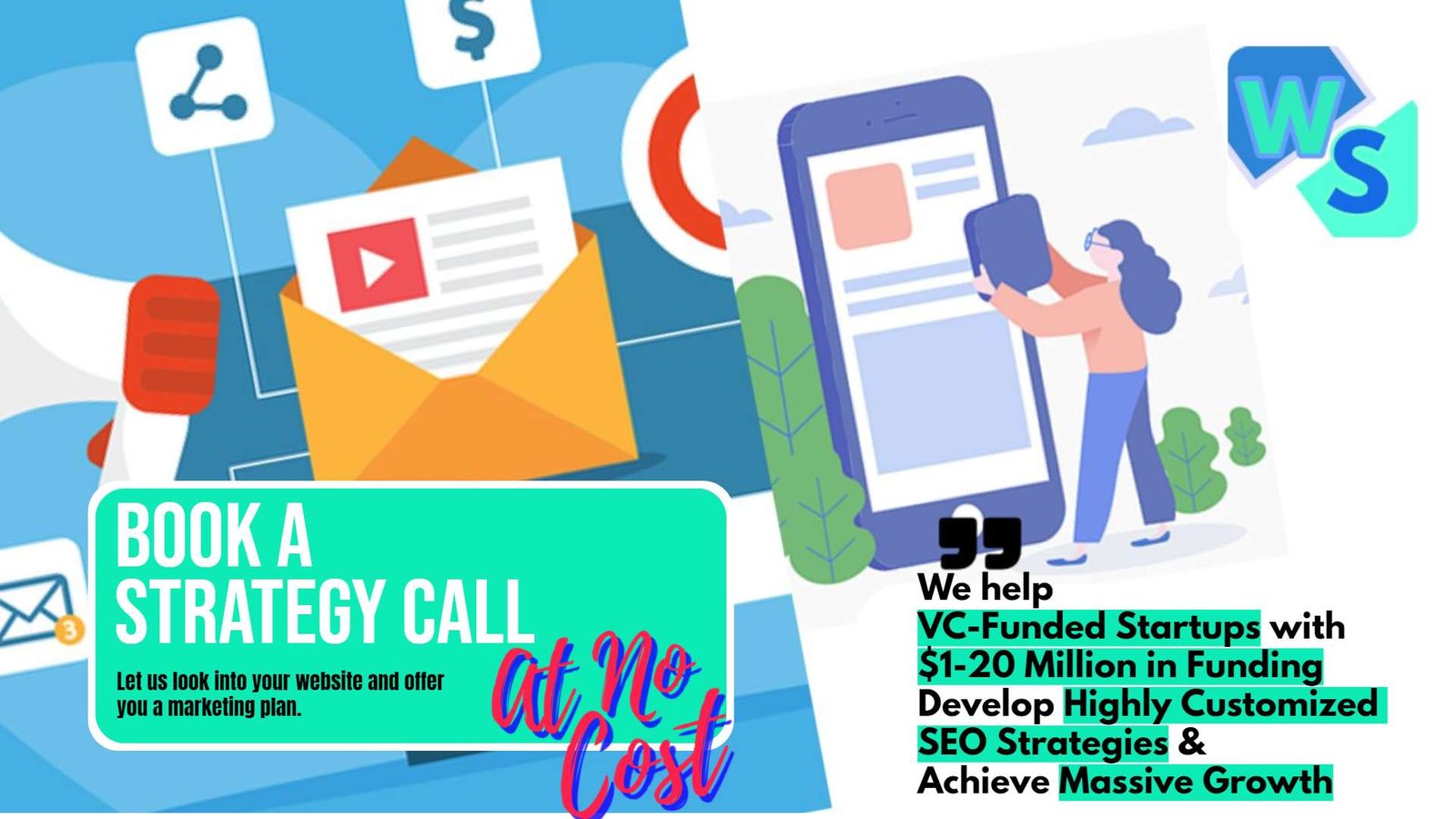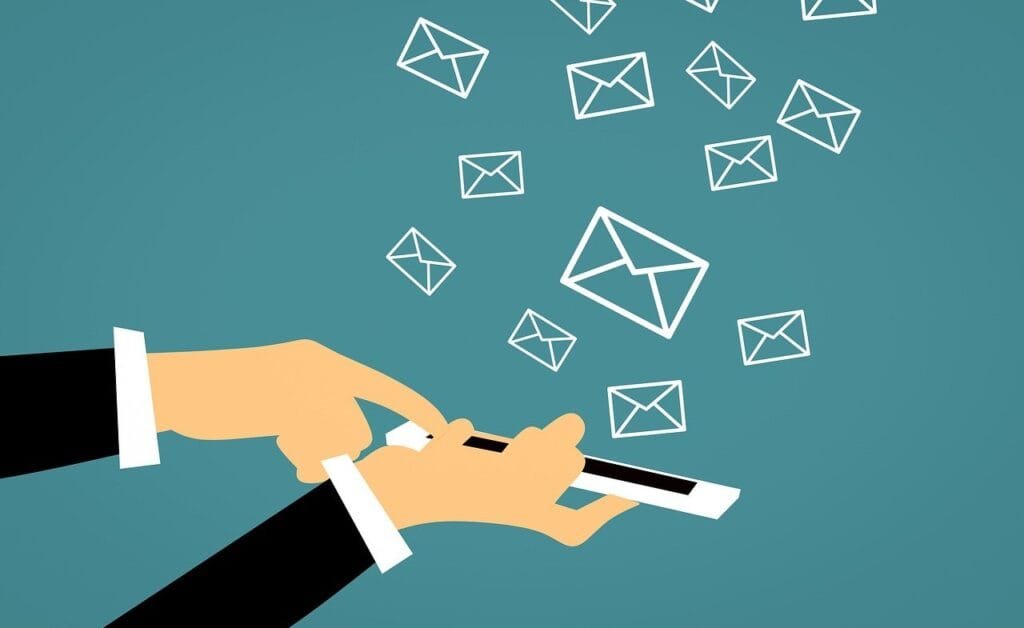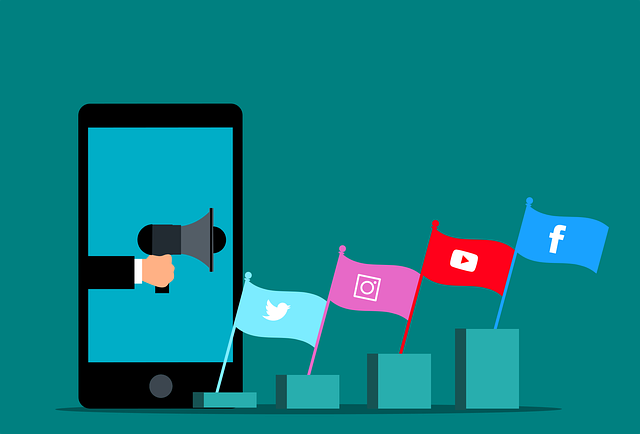In the world of digital marketing, retargeting is the art of staying connected with leads who didn’t convert the first time around. It’s about understanding their behaviors, reminding them of what they’re missing, and gently nudging them back into the funnel. But with leads interacting across platforms—websites, emails, social media, and more—manually managing retargeting campaigns becomes a daunting task. This is where Artificial Intelligence (AI) steps in, transforming how businesses retarget leads across multiple channels.
AI not only automates the retargeting process but also personalizes it, ensuring that each lead receives the right message at the right time on the right platform. Let’s explore how AI-powered multi-channel lead retargeting works and how you can use it to drive conversions like never before.
Step 1: Understanding Multi-Channel Retargeting and AI’s Role
Multi-channel retargeting is the strategy of re-engaging leads across various platforms they interact with. For example, a lead might visit your website, then see an ad on Facebook, receive an email, and later interact with a chatbot. Each of these touchpoints offers an opportunity to bring them closer to conversion.
What is Multi-Channel Retargeting?
AI enhances this process by unifying data from all these channels. It tracks user behavior, identifies patterns, and decides the best way to engage each lead. For instance, if a lead frequently engages with Instagram ads but rarely opens emails, AI prioritizes retargeting through social media.
This ensures your efforts are focused where they’re most effective, improving ROI while minimizing wasted effort.
Why Manual Retargeting Falls Short
Manually managing retargeting across multiple platforms can lead to inefficiencies and missed opportunities. Without AI, it’s challenging to track leads across channels, understand their behavior, and personalize messaging. For example, a manual campaign might show the same ad repeatedly to a lead who has already moved further down the funnel, creating frustration instead of engagement.
AI eliminates these issues by automating the tracking and personalization process. It ensures your campaigns are timely, relevant, and adaptive, making each interaction meaningful. This is especially important in today’s fast-paced digital environment, where leads expect personalized experiences.
By automating retargeting, AI frees up your team to focus on strategy and creativity.
How AI Integrates Across Channels
AI doesn’t just operate on one platform—it integrates seamlessly across your entire marketing ecosystem. From Google Ads and Facebook to email and SMS, AI ensures your messaging is consistent and aligned. For example, if a lead clicks on an ad for a product but doesn’t purchase, AI might trigger a follow-up email highlighting its benefits or a chatbot conversation offering a discount.
This multi-channel approach creates a cohesive experience, making it easier for leads to recognize your brand and take action. With AI, every channel becomes part of a unified retargeting strategy.
Step 2: Tracking Lead Behavior Across Channels

Effective retargeting starts with understanding your leads. AI excels at collecting data from multiple touchpoints, including website visits, email interactions, social media engagement, and even offline activities like event sign-ups. For instance, if a lead browses a product page but doesn’t convert, AI captures this behavior for future retargeting.
Collecting Data from Every Touchpoint
This data forms the foundation of your retargeting strategy. By knowing where a lead has been and what they’ve done, AI can predict their next steps and craft campaigns that feel personal and relevant.
Comprehensive tracking ensures no lead falls through the cracks, maximizing your retargeting opportunities.
Creating Unified Profiles
AI consolidates data from various channels to create unified profiles for each lead. These profiles include details like browsing history, preferred communication channels, and past interactions. For example, a profile might show that a lead prefers video content, has a high engagement rate on LinkedIn, and previously abandoned their cart.
With this unified view, AI can tailor retargeting campaigns to each lead’s preferences and behaviors. This ensures every interaction feels personalized, increasing the likelihood of re-engagement.
Unified profiles allow you to treat leads as individuals rather than generic segments.
Real-Time Data Analysis
One of AI’s greatest strengths is its ability to analyze data in real-time. This means that as a lead interacts with your brand, AI adjusts its retargeting strategy dynamically. For example, if a lead watches a product demo, AI might immediately serve them an ad for a free trial or schedule a follow-up email.
Real-time analysis keeps your retargeting efforts agile and responsive, ensuring you’re always one step ahead of the lead’s journey.
Step 3: Personalizing Retargeting Messages
AI ensures that your retargeting messages are contextual and relevant. Instead of showing the same ad to every lead, AI tailors the content based on their behavior. For example, a lead who abandoned a cart might see an ad highlighting the exact product they left behind, while a lead who downloaded a whitepaper might receive an email inviting them to a webinar.
Crafting Contextual Messages
This level of personalization demonstrates that you understand the lead’s needs, building trust and increasing engagement.
Contextual messaging turns retargeting into a conversation rather than a broadcast.
Dynamic Ad Creation
Dynamic ads are a powerful tool for multi-channel retargeting. AI automatically generates these ads using real-time data, ensuring they’re always relevant. For instance, if a lead browses a specific category on your website, AI can create an ad featuring products from that category.
This automation not only saves time but also improves ad performance, as leads are more likely to engage with content that matches their interests.
Dynamic ads ensure your retargeting efforts feel fresh and personalized.
Optimizing Timing and Frequency
AI also determines the best timing and frequency for retargeting messages. For example, it might send a follow-up email within hours of a lead abandoning their cart or schedule ads during times when the lead is most active online.
By optimizing timing, AI ensures your messages are seen when they’re most likely to resonate, avoiding overexposure that could lead to annoyance.
Perfect timing maximizes the impact of your retargeting campaigns.
Step 4: Scaling Retargeting Across Platforms

Different platforms require different approaches, and AI adapts your campaigns accordingly. For example, a retargeting campaign on Facebook might focus on eye-catching visuals, while an email campaign might use detailed product descriptions and testimonials.
Adapting Campaigns for Each Channel
AI understands the nuances of each channel and ensures your messaging is optimized for its audience. This cross-platform adaptability creates a seamless experience for leads, no matter where they engage with your brand.
Channel-specific optimization increases the effectiveness of your retargeting efforts.
Automating Multi-Channel Workflows
AI automates the workflow of moving leads between channels. For instance, if a lead doesn’t engage with an email, AI might retarget them with a social media ad instead. This dynamic approach ensures you’re always reaching leads on their preferred platforms.
Automation simplifies the complexity of managing multi-channel campaigns, allowing your team to focus on strategy rather than execution.
Efficient workflows keep your retargeting campaigns running smoothly across all channels.
Monitoring and Adjusting Campaigns
AI continuously monitors the performance of your retargeting campaigns and makes adjustments as needed. For example, if an ad underperforms on one platform, AI reallocates resources to a more successful channel. Similarly, it might test different messaging or formats to optimize engagement.
This iterative process ensures your campaigns stay effective, even as lead behaviors and market conditions change.
Constant optimization drives consistent results.
Step 5: Enhancing ROI with AI-Powered Multi-Channel Retargeting

One of the most significant advantages of AI-driven multi-channel retargeting is its ability to lower the cost per acquisition (CPA). By targeting leads more precisely and using real-time data to refine campaigns, AI ensures that your marketing dollars are spent wisely. Instead of casting a wide net, AI focuses on the most promising leads, reducing wasted ad spend.
Lowering Cost Per Acquisition
For example, AI can analyze which leads are most likely to convert based on their engagement patterns and allocate your budget accordingly. If a lead shows high intent, such as adding an item to their cart and visiting your pricing page, AI might prioritize that lead for retargeting with higher-value ads or offers.
This precision ensures that your campaigns generate maximum ROI by converting leads efficiently.
Improving Conversion Rates
AI doesn’t just make your campaigns cost-effective—it also boosts conversion rates. By delivering personalized, timely, and relevant messages, AI keeps leads engaged and guides them toward taking action. For instance, a lead who interacts with a dynamic ad showcasing a product they viewed is more likely to click and convert than one who sees a generic ad.
Additionally, AI’s ability to test and optimize campaigns ensures continuous improvement. If a specific message or format isn’t resonating, AI adapts, ensuring that your campaigns are always aligned with lead preferences.
Higher conversion rates mean your retargeting efforts are not only more effective but also more profitable.
Strengthening Customer Retention
Retargeting isn’t just for prospects—it’s also a powerful tool for retaining existing customers. AI can identify customers who haven’t interacted with your brand recently and re-engage them through personalized offers, updates, or recommendations. For example, an e-commerce store might use AI to retarget a past customer with a discount on complementary products.
This proactive approach keeps your brand top-of-mind, encouraging repeat purchases and fostering loyalty. By focusing on both acquisition and retention, AI ensures your retargeting strategy delivers value across the entire customer lifecycle.
Strong retention rates translate into long-term profitability and sustainable growth.

Related: Check out our free tools:

Step 6: Overcoming Challenges with AI in Multi-Channel Retargeting
As AI collects and analyzes vast amounts of data, privacy becomes a critical consideration. To build trust with your audience, ensure that your retargeting campaigns comply with regulations like GDPR and CCPA. Clearly communicate how data is collected and used, and provide options for leads to opt out if they choose.
Addressing Privacy Concerns
For example, include transparent privacy policies on your website and make it easy for users to adjust their data preferences. Use anonymized data whenever possible to reduce risks while maintaining the effectiveness of your campaigns.
Prioritizing privacy not only protects your brand but also enhances lead trust, making them more likely to engage with your retargeting efforts.
Avoiding Overexposure
One common pitfall in retargeting is overexposing leads to the same messages or ads, which can lead to frustration or ad fatigue. AI helps mitigate this by managing the frequency and diversity of your campaigns. For example, if a lead has already seen an ad multiple times, AI might switch to a different message or pause retargeting temporarily.
This ensures that your campaigns remain fresh and engaging, avoiding the risk of annoying your audience. By balancing frequency and variety, AI keeps your retargeting efforts effective and well-received.
Strategic pacing ensures your brand stays in a positive light with your leads.
Integrating AI with Existing Tools
For businesses already using various marketing tools, integrating AI can feel overwhelming. However, many AI platforms are designed to work seamlessly with existing systems, such as Google Ads, Facebook Ads Manager, and CRMs like HubSpot or Salesforce. Start by choosing AI tools that integrate easily and focus on one or two channels before scaling.
For instance, implement AI for email retargeting first, then expand to social media or display ads once you’ve seen success. Gradual integration ensures a smoother transition and better adoption across your team.
Step-by-step implementation makes it easier to unlock AI’s full potential without disrupting your workflow.
Step 7: Future Trends in AI-Powered Retargeting

As AI continues to evolve, predictive retargeting is set to become a game-changer. Instead of waiting for leads to take action, AI will use predictive analytics to anticipate their needs and engage them proactively. For instance, if a lead’s behavior suggests they’re close to making a decision, AI might trigger a special offer or personalized message to close the deal.
Predictive Retargeting
This forward-thinking approach keeps your campaigns ahead of the competition, ensuring you capture leads at the right moment.
Predictive retargeting represents the next level of personalization and efficiency.
Voice and Conversational Retargeting
With the rise of voice assistants like Alexa and conversational AI tools like chatbots, retargeting is expanding into new formats. For example, a voice assistant might remind a lead about a product they viewed or suggest a new offer during a routine interaction.
Similarly, chatbots can engage leads in real-time, answering questions and guiding them back into the funnel. These emerging channels offer exciting opportunities for brands to connect with leads in innovative ways.
Leveraging voice and conversational AI ensures your retargeting strategy remains relevant in a changing digital landscape.
Enhanced Omnichannel Experiences
AI is increasingly enabling true omnichannel retargeting, where leads experience consistent messaging across all platforms. For instance, a lead might start by seeing an Instagram ad, receive a follow-up email, and later interact with a personalized chatbot—all seamlessly connected.
This level of integration creates a cohesive journey that strengthens brand recognition and builds trust. As AI technology advances, the ability to deliver synchronized, multi-channel experiences will become even more sophisticated.
Omnichannel strategies powered by AI will redefine how brands engage their audiences.
Step 8: Implementing AI-Powered Retargeting in Your Strategy

To effectively incorporate AI into your multi-channel retargeting strategy, begin with a pilot campaign. Focus on a single channel or a specific audience segment to test the waters. For instance, you could start with retargeting website visitors who abandoned their shopping carts and use AI to analyze their behavior and create personalized follow-up messages.
Starting with a Pilot Campaign
During this pilot phase, measure key metrics such as click-through rates, conversion rates, and engagement levels. Use the insights gathered to refine your AI algorithms and optimize the campaign. This approach helps you understand how AI works within your ecosystem without overwhelming your team.
Starting small ensures a smooth rollout, minimizes risks, and lays the groundwork for broader implementation.
Expanding to Multi-Channel Retargeting
Once your pilot campaign shows results, scale your strategy across multiple channels. Integrate AI tools with platforms like Google Ads, Facebook, LinkedIn, and your email marketing software. This allows you to deliver cohesive messaging, regardless of where your audience interacts with your brand.
For example, a lead who clicks on a LinkedIn ad might receive a follow-up email offering a free trial, and if they don’t engage, they might see a retargeting ad on YouTube. AI ensures each touchpoint builds on the previous one, creating a seamless journey.
Expanding across channels maximizes your reach and ensures consistency, making it easier to guide leads toward conversion.
Training Your Team
Your team plays a critical role in the success of AI-powered retargeting. Invest in training to help them understand how AI tools work, interpret analytics, and adjust campaigns based on insights. For example, teach them to analyze AI-generated reports to identify patterns or refine messaging.
Encourage collaboration between departments—such as marketing, sales, and customer support—to ensure a unified approach. By fostering a data-driven culture, your team will be better equipped to leverage AI’s full potential.
Well-trained teams amplify the effectiveness of your AI tools, turning insights into actionable strategies.
Step 9: Measuring the Impact of AI in Retargeting

The success of your AI-powered retargeting strategy depends on tracking the right metrics. Focus on key performance indicators (KPIs) such as:
Tracking Metrics that Matter
- Engagement rates: Are your retargeting messages resonating with leads?
- Conversion rates: How many leads are taking desired actions, such as purchases or sign-ups?
- Return on ad spend (ROAS): Are your campaigns delivering a positive ROI?
AI tools can provide detailed analytics dashboards, making it easy to monitor these metrics in real-time. Use these insights to identify what’s working and where adjustments are needed.
Tracking the right KPIs ensures you can quantify the value AI brings to your retargeting efforts.
Analyzing Customer Feedback
In addition to quantitative metrics, qualitative feedback is invaluable. Conduct surveys or use AI sentiment analysis tools to gauge how your retargeting campaigns are perceived. For instance, if customers find your messaging helpful and relevant, it’s a sign your AI strategies are on point.
If feedback indicates areas for improvement, such as overly frequent ads or irrelevant offers, use this information to tweak your campaigns. AI thrives on continuous input, and incorporating feedback ensures your strategies stay customer-centric.
Listening to your audience helps refine your approach and maintain positive engagement.
Iterating for Continuous Improvement
AI-driven retargeting is not a one-and-done process. Regularly review your campaigns, experiment with new strategies, and let AI tools optimize your efforts over time. For example, A/B test different ad creatives or messaging styles to determine what resonates best with your audience.
By iterating based on data and feedback, you ensure your retargeting campaigns remain fresh, relevant, and effective. This continuous improvement keeps your strategy ahead of competitors and aligned with evolving customer expectations.
AI’s ability to learn and adapt ensures your campaigns improve with each iteration.
Conclusion: AI as the Backbone of Multi-Channel Retargeting
AI is revolutionizing multi-channel lead retargeting by automating processes, personalizing messages, and optimizing campaigns across platforms. It turns retargeting into a precise, data-driven strategy that engages leads where they are, with content that resonates.
From tracking behavior and crafting personalized messages to scaling campaigns and adapting in real-time, AI handles the complexities of retargeting with ease. The result is a seamless experience for leads and a higher ROI for your marketing efforts.
Start integrating AI into your retargeting strategy today and watch as your leads move effortlessly through the funnel, turning into loyal customers. In a digital world, staying connected with your audience has never been more important—or more achievable—with the power of AI.
READ NEXT:
- Are Vanity Metrics Killing Your Marketing Efficiency? Here’s What to Track Instead
- Pinpointing Digital Marketing ROI: Why Your Metrics Aren’t Telling the Full Story
- Unlocking Real ROI in Digital Marketing: The Hidden Costs Draining Your Budget
- How Misaligned Marketing Funnels Are Blocking Your ROI Potential
- Best Digital Marketing Agency In Santa Ana, California
- Best Digital Marketing Agency In San Francisco, California





















